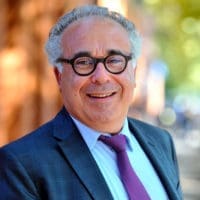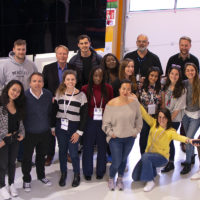

Inside CERN Innovation Booster!
Markus Nordberg is Head of Resources Development. Together with Marzio Nessi, he has set up IdeaSquare within CERN’s Development and Innovation Unit. The purpose of IdeaSquare is to connect the science with the business, bring together people to generate new ideas and work on conceptual prototypes.
How innovation is generated through IdeaSquare?
Since its launch in 2014, we develop and test ideas by taking advantage of our machine or electrical workshop, 3D printer, light lab, and VR headset for rapid prototyping. It offers ad hoc meeting space and rapid prototyping facilities for innovation-related projects. For this, we surround ourselves with teams of different expertise and with new ideas. Take part in or host collaborative activities like Challenge based Innovation, hackathons, or workshops is a way to achieve it. Through this process, we explore innovation methodologies that support divergent research, problem reframing, and iterative testing. That is how we develop or contribute to develop next generation scientific instrumentation for our own internal needs over a long-time period. We are looking way into the future: 10–15 years. These processes are very long, they have their own pace linked to the scientific community or to the industry. The progress is there, but is not like that we are inventing the web every week. IdeaSquare is also in charge of the student programme. What we have done with CREA is a bit special because it’s specifically focused on the communication aspect. What we typically do with our master students is to give them societal challenges which they take over and develop as part of the curriculum at their own universities.
Could you give us some examples of achievements you are proud of?
For example, we’ve had students who worked together with our experts in augmented reality and out of that they developed a very simple cheap tool that can be, and is being, used by psychologists to work with autistic children.
This is a connection we would never ever have made by ourselves: how augmented reality can help autistic children.
Another example: the students wanted to contribute to reduce food waste. Remember that 30% of food is wasted before it’s even served to us! They wanted to develop something to reduce this, so they came with a nice idea over a physical measurement device. It works like a dish where you can put your fruit or your vegetable and it measures the physical properties of the fruit inside. It actually measures resistibility. Then based on that resistibility that changes over time, you can link how rotten this food or vegetable is. So, considering the change in the resistibility, you can match it with your own needs or preferences. This prototype which is about 20x20cm is connected to a mobile phone. The idea is to put the plat in your fridge and when the vegetable is ripe, it sends you a message saying, “come and eat me!”
A third example, students started to look at a project of getting rural kids in Ghana to attend school. At first, they were a bit puzzled: why kids don’t show up at school? They found out that the kids would like to and the parents did not mind. However there was a big absence because kids in small villages are sent in the morning to collect water for the needs of the family. That’s OK if the water well is not too far and works. But it turns out that 70% of water wells in Ghana don’t work, depending on the level or absence of rain. So, the students made a simple device that measures the water flows through the pump. Then, a simple mobile phone, a €5one, sends an analogue signal, based on the water gauge if the water is coming through or not. This information goes to the villages, so the kids go to the right water well. Doing so, they don’t lose time looking for all the water wells, therefore they go earlier to school. These projects did not revolutionized the world, but they have some impact. And they enable us to measure actually the learning effect on the students. In our studies at CERN, the gap between theory and practice is so big that we try to figure out ways like these to minimize it…
Could you sum up your credo?
We try to inspire the students, to give them the will to be ambitious in their thinking, yet, of course, being modest, not to boast. We have a saying in IdeaSquare:
“Think big, do good.”
Don’t let your imagination stop you, it’s OK to think beyond your dreams. In that point of view we are not so different from philosophers or poets. The students are more socially adaptable, they smell the future, so we try to help them make this future happen.
This interview was conducted by Illyria Pfyffer
Pictures : bofilm.it & infieri-network.eu









